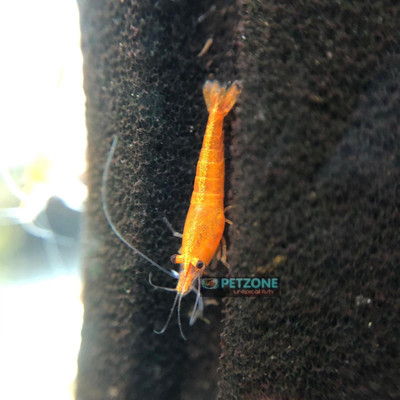Sunkist Shrimp
Posted by Max Gandara on on 21st Aug 2024
The Sunkist Shrimp: A Radiant Gem for Freshwater Aquariums
For those looking to infuse a burst of sunshine into their freshwater aquarium, the Sunkist Shrimp (Neocaridina davidi) is a brilliant choice. Named for its vibrant, citrus-like coloration, the Sunkist Shrimp is not only a visual delight but also a hardy and captivating addition to your tank. In this blog, we'll explore the charm and care of the Sunkist Shrimp, providing insights on its unique features, habitat requirements, and tips for maintaining a thriving environment.
The Allure of the Sunkist Shrimp
Bright and Cheerful Appearance
The Sunkist Shrimp lives up to its name with its bright orange to yellowish-gold hue, reminiscent of a sunlit citrus fruit. This shrimp's coloration can range from a soft, pale orange to a vivid, eye-catching gold, creating a warm and lively focal point in any aquarium. The vibrant color of the Sunkist Shrimp can add a sunny disposition to your tank, making it an instant favorite among aquarists.
Origin and Background
The Sunkist Shrimp is a variant of the popular Neocaridina davidi species, often referred to as the Cherry Shrimp. Originating from Taiwan, this shrimp has been selectively bred to enhance its bright, sunny coloration. The breeding focus has been on achieving a consistent, vibrant hue while maintaining the shrimp’s hardy nature, making the Sunkist Shrimp a resilient and beautiful choice for both beginner and experienced hobbyists.
Creating the Ideal Environment
Tank Requirements
To ensure the well-being and vibrancy of your Sunkist Shrimp, follow these tank setup guidelines:
- Tank Size: While Sunkist Shrimp can adapt to smaller tanks, a minimum of 10 gallons is recommended. A larger tank provides better water stability and more room for the shrimp to explore.
- Water Parameters: Sunkist Shrimp are relatively adaptable but thrive in stable conditions. Maintain a pH level between 6.5 and 7.5 and keep the water temperature between 72-78°F (22-26°C). Soft to moderately hard water is ideal.
- Substrate: A fine gravel or sand substrate is best for Sunkist Shrimp. A darker substrate can enhance their bright coloration and provide a nice contrast.
- Filtration: A gentle filter, such as a sponge filter, is preferred. Strong currents can stress these shrimp, so choose a filter that offers effective filtration without creating too much turbulence.
- Plants and Decorations: Incorporate live plants and decorations to create a natural and stimulating environment. Plants like Java moss, Anubias, and Cryptocoryne provide hiding spots and grazing opportunities. Driftwood and rocks also add to the tank’s aesthetic and functional value.
Diet and Care
Feeding
Sunkist Shrimp are omnivores with a varied diet. Offer a mix of high-quality shrimp pellets, algae wafers, and occasional fresh vegetables like blanched spinach or zucchini. They will also graze on biofilm and algae present in the tank, which is beneficial for their diet. Avoid overfeeding, as uneaten food can affect water quality.
Maintenance
Regular maintenance is crucial for keeping your Sunkist Shrimp healthy and vibrant. Perform partial water changes weekly to maintain good water quality. Test water parameters regularly to ensure they remain stable, especially in new setups. Proper filtration and regular cleaning will help prevent any potential issues.
Breeding Sunkist Shrimp
Breeding Sunkist Shrimp is relatively straightforward, given the right conditions:
- Tank Setup: Ensure the tank is well-established with stable water parameters and plenty of hiding spots for the young shrimp. A well-maintained tank will support both adults and their offspring.
- Eggs and Larvae: Female Sunkist Shrimp carry eggs under their tails until they hatch. The larvae go through several developmental stages before maturing into adults. Providing a suitable environment with ample food and shelter will support successful breeding.
Challenges and Considerations
Compatibility
Sunkist Shrimp are peaceful and generally get along well with a variety of tankmates. However, avoid keeping them with aggressive or larger fish that might view them as prey. Suitable tankmates include small, non-aggressive fish and other invertebrates.

